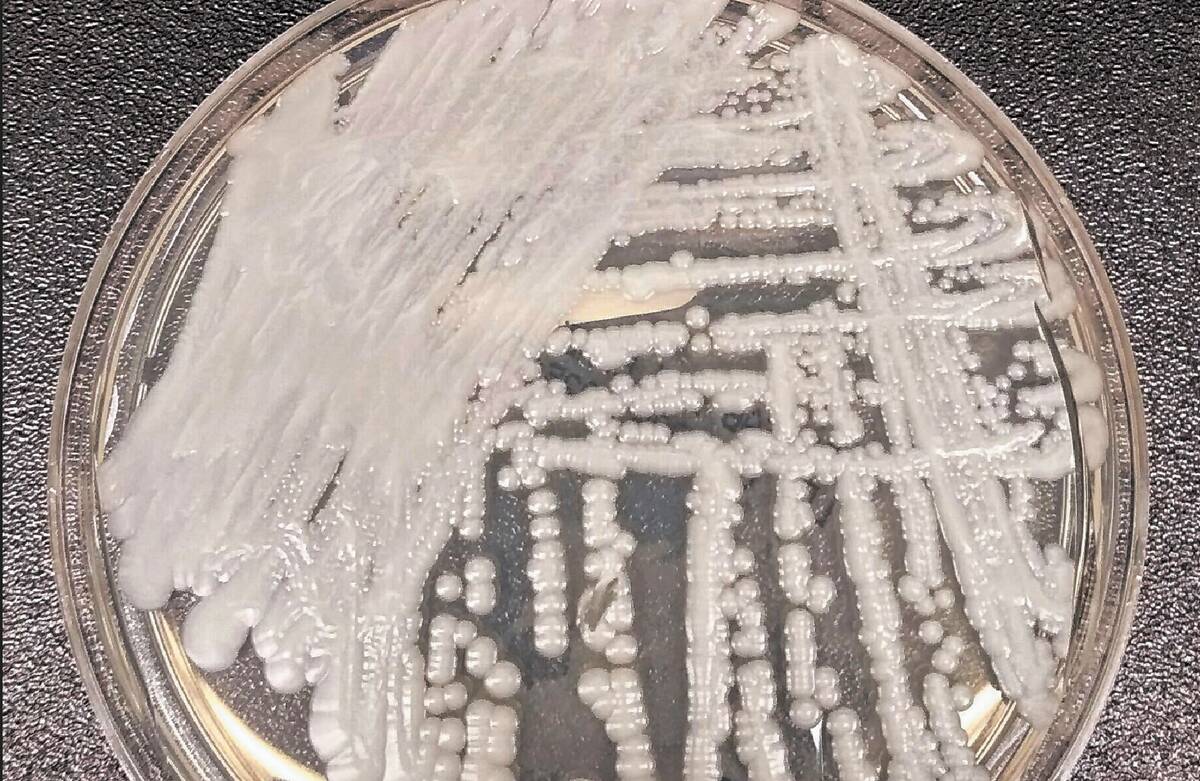Fungus ‘superbug’ cases rise to highest levels in Nevada
Six months after Nevada’s congressional delegation called for a better plan for fighting “superbug” Candida auris, the number of new cases in the southern part of the state has risen to record levels.
In October, there were 57 new clinical cases of the drug-resistant, potentially lethal fungus that can invade a person’s bloodstream, brain, heart or other organs, according to Nevada Division of Behavioral Health data. In the same month, 123 cases of colonization were reported in which individuals typically have the fungus in the folds of their skin, invisible to the eye, yet are not sick. Those people can still transmit the pathogen.
The fungus can spread from person to person and also from contaminated surfaces and equipment with transmission occurring most often in healthcare settings. Patients who have been hospitalized for a long time, or have a central venous catheter or other lines or tubes entering their body, are at highest risk for infection, public health authorities say. Healthy people usually don’t develop an invasive infection.
Since August 2021, when the first local cases were reported, there have been nearly 2,300 total cases in Southern Nevada – 904 clinical cases and 1,369 colonizations – at 42 acute-care hospitals, long-term care hospitals and skilled nursing facilities, according to data.
“The data suggests that enhanced screening efforts likely accounted for this increase,” division representative Dawn Cribb wrote in an email.
Although the number of clinical cases rose only slightly higher than in previous months, the cases of colonization — which are detected through screening people without symptoms — increased significantly. Cribb said she did not have figures on screening increases.
Worse outbreaks in U.S.
Last year, Southern Nevada experienced the worst outbreaks of C. auris in the U.S., according to Centers for Disease Control and Prevention data. In 2022, Nevada reported 384 of the country’s 2,377 clinical cases.
In the spring of last year, the Nevada Department of Health and Human Services alerted healthcare providers to the outbreaks as first reported in the Review-Journal.
In April of this year, Nevada’s entire congressional delegation signed on to a letter to the CDC director asking the federal public health agency to “swiftly deliver necessary resources to the public health professionals and health care providers in Nevada on the front lines of this outbreak.”
The delegation asked the CDC to work with state officials to develop a comprehensive plan and to provide additional resources.
Since this call to action, no formal plan has been developed, according to Cribb. However, the state’s healthcare-acquired infection program continues to work closely with the CDC through monthly calls, she said.
In August, the CDC provided on-site training to program staff and performed infection control assessments at two facilities “to put the training into practice,” CDC representative Katia Martinez said in an email.
In a letter in May responding to the delegation’s request, then-CDC director Rochelle Wallensky wrote that the federal agency provides annual support to the state’s healthcare-acquired infection program, including $520,000 in base funding in fiscal year 2022 and an additional $20,000 to support fungal disease prevention programs.
The Nevada health department received almost $6.8 million in American Rescue Plan Act supplemental funding in the same year “to support this critical work,” Wallensky wrote. The money funded prevention and detection measures, including expanding laboratory capacity.
Screening high-risk patients is done on a voluntary basis by hospitals and facilities, and public health authorities say that levels of screening vary widely among facilities.
Before admitting patients, Sunrise Hospital and Medical Center screens high-risk individuals for C. auris, including people who live on the street, those with wounds and transfers from other hospitals and long-term care facilities, said Dr. Steven Merta, the hospital’s chief medical officer. The first cluster of cases in children in the U.S. was identified at the hospital last year.
When screening, which involves swabbing the skin, detects a colonized individual, the patient is kept in isolation and advanced disinfection technology is used, in which dry hydrogen peroxide is dispersed through the air to disinfect the environment, Merta said.
Merta said he was not surprised that Sunrise has reported the highest number of cases, considering its active screening of patients and that it is the largest acute-care facility in the state.
Authorities say that eradicating the fungus is unlikely in places where it has taken hold.
You “can control it and learn to mitigate the risk for the people that are the most vulnerable,” said David Perlin, chief scientific officer of the Center for Discovery and Innovation and a professor at the Hackensack Meridian School of Medicine.
Perlin said he wasn’t surprised by the growing number of new cases in Southern Nevada, which follows a pattern seen in earlier outbreaks in New Jersey, New York and Illinois. But he says the increase indicates the need for more screening, including in places outside of hospitals such as dialysis centers and nursing homes.
More than one in three people who develop an invasive infection die, according to the CDC. Many of these people have other serious medical conditions. The most common symptoms of an invasive infection are fever and chills that don’t improve after antibiotic treatment for a suspected bacterial infection. C. auris is growing increasingly resistant to the anti-fungal medications used to treat it.
A representative of the Nevada Department of Health and Human Services said earlier this year that as of late March, there had been 103 deaths in patients with Candida auris in Southern Nevada.
However, Cribb said her division no longer reports the number of deaths. “It is extremely difficult to determine whether deaths among such patients are attributable only to C. auris and not due to a pre-existing condition,” she wrote. “In addition, there is no national case definition for a death caused by C. auris.”
Contact Mary Hynes at mhynes@reviewjournal.com. Follow @MaryHynes1 on X. Hynes is a member of the Review-Journal’s investigative team, focusing on reporting that holds leaders and agencies accountable and exposes wrongdoing.























